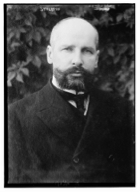

|
Was Tsarism Reformable? The reforms promised by the tsar in the October Manifesto were realised in the Fundamental Laws of April 1906. The Fundamental Laws were not a 'constitution' - a word rejected by Nicholas II as incompatible with his coronation oath - because the Tsar's sovereignty did not derive from them. He retained the title of an 'Autocrat'. But they did establish a new constitutional arrangement under which the Tsar's appointed government had to get its bills approved by the Duma. The court remained the centre of political power. The tsar appointed the Prime Minister and the government (the Council of Ministers). He could dissolve the Duma and (under Article 87 of the Fundamental Laws) rule by emergency decree when it was not in session (a loophole used to bypass parliament). The Duma was elected by an indirect system of voting heavily weighted in favour of the court's traditional allies. It was a legislative parliament but could not pass its own laws without the endorsement of the tsar and the State Council, the upper chamber, dominated by the landed nobility. The Duma turned out to be far more radical than the government had bargained for when it drew up the Electoral Law. From its opening session in the Tauride Palace on 27 April 1906, the Duma was turned into a revolutionary tribune. The SRs and SDs had boycotted the Duma elections, but the largest party, the Kadets, with 153 of the 448 seats, immediately demanded radical political reforms. The second largest party were the 107 Trudoviks (Labourites), a peasant party, whose main goal was a radical solution of the land question through the compulsory expropriation of the gentry's property. With the Kadets they introduced a bill for land reform in the Duma.  Petr Stolypin On 8 July, the Tsar dissolved the Duma. Meanwhile, the Tsar appointed Petr Stolypin as Prime Minister. Stolypin was a proven executor of repressive measures to restore order in the countryside, so he seemed the right man to stand up to the Duma and its land reforms. However, he also had a broader vision of agrarian and political change to undermine the revolutionary cause. Stolypin was Prime Minister from July 1906 until his assassination in 1911. The debate about whether Tsarism could have been saved by reform depends on an assessment of Stolypin and his chances of success. |
© 2014 Orlando Figes | All Rights Reserved